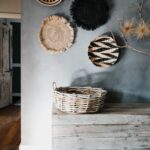Welcome to the fascinating world of home decor flooring. In this blog post, we will delve into the various types of flooring options available in the market and guide you in choosing the perfect fit for your space. Home decor flooring plays a crucial role in creating a visually appealing and comfortable home, making it a topic worth discussing.
Choosing the right flooring is not just about aesthetics; it also impacts the overall functionality and ambiance of your home. Whether you prefer the timeless elegance of hardwood, the affordable versatility of laminate, or the trendy resilience of vinyl, there is a flooring option out there that will suit your specific needs and style.
The objective of this blog post is to equip you with knowledge on different types of home decor flooring and empower you to make informed decisions when it comes to enhancing your living space. So let’s dive in and discover everything you need to know about transforming your home through the power of flooring selection.
Types of Home Decor Flooring
When it comes to home decor flooring, there are plenty of options available to suit every style, budget, and functionality. Understanding the different types of flooring can help you make an informed decision and find the perfect fit for your space. Let’s explore some of the most common types of home decor flooring and discuss their advantages and disadvantages.
Hardwood Flooring
Hardwood flooring is known for its timeless elegance and durability. It adds warmth and natural beauty to any room. There are various hardwood species available, each with its own unique characteristics. For example, oak hardwood is known for its strength and durability, while maple hardwood offers a lighter and brighter appearance.
The installation process of hardwood flooring involves nailing or stapling it to a subfloor or gluing it down. Hardwood floors require regular maintenance such as sweeping, vacuuming, and occasional refinishing to keep them looking their best. While hardwood flooring may have a higher upfront cost compared to other options, it can increase the value of your home and last for decades.
Laminate Flooring
If you’re looking for an affordable yet versatile option, laminate flooring might be the right choice for you. Laminate floors are made up of multiple layers that are fused together through lamination. This type of flooring can mimic the look of hardwood, ceramic tile, or stone at a fraction of the cost.
Advancements in laminate technology have made it more durable and resistant to scratches and stains. It is also relatively easy to install as most laminate floorings come in interlocking planks that float over the existing floor without glue or nails. However, laminate flooring may not hold up well against water damage compared to other options.
Vinyl Flooring
Vinyl flooring is gaining popularity due to its affordability, durability, and water-resistant nature. It is available in various forms, including sheet, tile, and plank. Vinyl flooring is highly versatile and can replicate the look of other flooring types such as hardwood or stone.
Installation of vinyl flooring depends on the type you choose. Sheet vinyl requires professional installation, while vinyl tiles and planks are designed for easy DIY installation with adhesive or click-lock systems. Vinyl flooring is also relatively low maintenance and can be easily cleaned with regular sweeping and occasional mopping.
| Type of Flooring | Advantages | Disadvantages |
|---|---|---|
| Hardwood Flooring | Elegant, durable, increases home value | Higher upfront cost, requires regular maintenance |
| Laminate Flooring | Affordable, versatile, easy to install | Poor water resistance |
| Vinyl Flooring | Affordable, durable, water-resistant | May not have the same aesthetic appeal as other options |
Unleashing the Beauty of Hardwood Flooring
Hardwood flooring is a popular choice for homeowners looking to bring timeless elegance into their homes. With its natural beauty and durability, hardwood floors can enhance the overall aesthetic appeal and value of any space. In this section, we will explore the charm of hardwood flooring, different hardwood species available, the installation process, maintenance requirements, and the overall cost.
One of the main advantages of hardwood flooring is its unique ability to add warmth and character to any room. The natural grains and colors found in hardwood give it a distinct charm that cannot be replicated by other flooring materials. Whether you prefer a rustic look with wide planks or a more contemporary style with sleeker designs, there is a hardwood species to suit every taste.
| Hardwood Species | Characteristics |
|---|---|
| Oak | Durable and versatile, available in various finishes |
| Maple | Harder wood with a lighter color, ideal for high-traffic areas |
| Walnut | Luxurious and rich in color, adds an elegant touch to any space |
The installation process for hardwood floors typically involves either nailing down or gluing the individual planks onto a subfloor. While professional installation is recommended for optimal results, experienced DIY enthusiasts may also take on the task themselves with proper guidance. Regular maintenance is essential to preserve the beauty of hardwood floors. This includes routine cleaning using specific products suitable for wooden surfaces as well as avoiding excessive moisture exposure.
In terms of cost, hardwood flooring tends to be more expensive compared to other flooring options. The price can vary depending on the type of wood species chosen, the quality of the wood, and any additional features such as finishes or patterns. However, despite the initial investment, hardwood floors can last for decades with proper care and maintenance, making them a worthwhile investment for homeowners.
Laminate Flooring
Laminate flooring is a popular choice for homeowners looking to achieve the perfect balance between affordability and style. This type of flooring offers a wide range of benefits that make it a versatile option for modern homes.
One of the key advantages of laminate flooring is its affordability. For budget-conscious homeowners, laminate flooring provides an affordable alternative to other types of flooring such as hardwood or tile. Despite its cost-effective nature, laminate flooring still delivers on aesthetics, thanks to advancements in technology that allow it to mimic the look and feel of natural materials like wood or stone.
Versatility is another strong suit of laminate flooring. It comes in a variety of styles, colors, and patterns, making it easy to find the perfect fit for any room in your home. Whether you want a rustic wood look for your living room or a sleek tile appearance for your kitchen, there is sure to be a laminate option that suits your taste.
When choosing laminate flooring for specific areas of the house, it’s important to consider factors such as foot traffic and moisture levels. For high-traffic areas like hallways or entryways, opt for thicker laminate with increased durability. In areas prone to moisture like bathrooms or kitchens, choose laminate that has waterproof or water-resistant properties.
To maintain the longevity and beauty of your laminate floors, regular cleaning is essential. Sweeping or vacuuming regularly will prevent dirt and debris from scratching the surface, while damp mopping with a mild cleaner will help keep them looking their best.
Vinyl Flooring
The Benefits of Vinyl Flooring
Vinyl flooring has become a popular choice for homeowners due to its numerous benefits. One of the key advantages of vinyl flooring is its affordability. It is a cost-effective option, especially when compared to other types of flooring such as hardwood or tile. Additionally, vinyl flooring is known for its resilience and durability. It can withstand heavy foot traffic, making it suitable for high-traffic areas like entryways, kitchens, and hallways.
Another significant benefit of vinyl flooring is its water-resistant nature. This makes it ideal for areas prone to moisture such as bathrooms and basements. Vinyl floors are resistant to spills and stains, making them easy to clean and maintain. They also offer insulation properties, which can help keep a room warm during colder months.
Types of Vinyl Flooring
There are different types of vinyl flooring available in the market, each with its own set of characteristics and uses. Sheet vinyl is one type that comes in large rolls, which are then cut to fit the desired area. This type of vinyl offers seamless installation with minimal seams between sheets.
Vinyl tiles are another popular option. They come in various sizes and can be installed individually, allowing for customization in terms of design and pattern. The use of vinyl tiles also simplifies repair work since damaged tiles can be easily replaced without affecting the entire floor.
Vinyl plank flooring imitates the appearance of hardwood planks but at a more affordable price point. These planks come in different styles and finishes that mimic various wood species, adding a touch of elegance to any space.
Installation and Maintenance Tips
Installing vinyl flooring can be done by professionals or as a DIY project depending on your level of expertise. It is recommended to follow manufacturer guidelines during installation to ensure proper adhesion and prevent any issues down the line.
To maintain vinyl floors, regular sweeping or vacuuming is recommended to keep them free of dirt and dust. Spills should be cleaned up promptly to prevent staining. It is important to note that vinyl flooring is susceptible to fading when exposed to direct sunlight for prolonged periods, so using blinds or curtains can help protect the floor from UV rays.
Carpet Flooring
When it comes to creating a cozy and comfortable home environment, carpet flooring is the perfect choice. Carpets provide a soft and warm feeling underfoot that can’t be matched by any other type of flooring. Whether you want to create a cozy bedroom or a welcoming living room, carpet flooring can help you achieve the desired level of comfort.
There are different types of carpet to choose from, each with its own unique characteristics. Plush carpets have a luxurious feel and are perfect for areas where comfort is the top priority.
Berber carpets, on the other hand, are known for their durability and are great options for high-traffic areas such as hallways and stairs. Frieze carpets have a more casual look with their twisted fibers, making them suitable for family rooms and playrooms where spills and stains are more likely to occur.
To ensure that your carpet flooring lasts for years to come, proper maintenance is essential. Regular vacuuming helps remove dirt and debris that can get trapped in the fibers, while spot cleaning can take care of any spills or stains that may occur. Additionally, professional carpet cleaning every 12-18 months can help revitalize the appearance of your carpet and keep it looking fresh.
When it comes to selecting the right carpet for your space, it’s important to consider factors such as color, texture, and durability. Neutral-colored carpets are versatile and can easily match any decor style, while vibrant or patterned carpets can add personality and visual interest to a room. Additionally, considering the level of foot traffic in each area will help determine the appropriate carpet material and pile height.
Tile Flooring
When it comes to home decor flooring, tile is a popular and versatile choice that can transform any room. With its wide range of materials and styles available, tile flooring offers endless possibilities for creating a stunning and functional space. Whether you are considering ceramic, porcelain, or natural stone tiles, this section will provide valuable insights into the advantages of tile flooring and how to select the right type for each room in your home.
The Advantages of Tile Flooring
One of the key advantages of tile flooring is its durability. Tiles are known for their strength and resistance to wear and tear. They can withstand heavy foot traffic and are highly resistant to scratches and stains, making them ideal for high-traffic areas such as entryways, kitchens, and bathrooms.
Another benefit of tile flooring is its versatility. Tiles come in a variety of colors, patterns, shapes, and sizes, allowing you to create unique designs that reflect your personal style. From classic subway tiles to intricate mosaic patterns, there is a tile option to suit every taste and aesthetic preference.
Selecting the Right Tile Flooring for Each Room
When choosing tile flooring for specific rooms in your home, it is important to consider both style and functionality. Here are some tips for selecting the right type of tile for different areas:
- Kitchen: Opt for glazed ceramic or porcelain tiles that are durable and easy to clean. Consider larger-sized tiles with textured finishes to prevent slipping in this often busy area.
- Bathroom: Choose non-porous tiles such as porcelain or natural stone that can withstand moisture without compromising their integrity. Consider mosaic tiles on shower walls or as accents to add visual interest.
- Living Room: Embrace larger-format tiles in neutral colors like gray or beige to create a seamless look throughout your living space. If you prefer a more rustic feel, consider natural stone tiles for a warm and inviting ambiance.
- Bedroom: Experiment with softer textures and colors to create a cozy atmosphere. Consider wood-look porcelain tiles or stone tiles in warmer shades for an earthy feel.
By carefully selecting the right type of tile flooring for each room, you can achieve a cohesive and visually appealing home decor. Whether you prefer the classic elegance of ceramic tiles or the natural beauty of stone, tile flooring offers endless possibilities for creating unique and beautiful spaces throughout your home.
Mixing and Matching
When it comes to home decor flooring, thinking outside the box can truly transform a space. By mixing and matching different flooring types, you can create a truly unique and visually appealing look for your home. This section will explore the possibilities of combining various flooring materials to achieve a distinctive home decor.
One idea for mixing and matching flooring is to use different materials in separate areas of the house. For example, you may choose hardwood flooring for the living room to create a warm and inviting atmosphere, while opting for tile or vinyl in the kitchen or bathroom for their water-resistant properties. This creates a defined transition between spaces while still maintaining a cohesive overall design.
Another approach is to use contrasting materials in close proximity to each other. This can create visual interest and help define different zones within an open-concept floor plan. For example, consider using carpet in the living area and hardwood or laminate in the dining area. The contrast between the softness of carpet and the sleekness of wood can add depth and character to your space.
Mixing and matching flooring materials also opens up creative opportunities in terms of patterns and designs. Consider incorporating unique tile patterns as accents within a larger expanse of hardwood or laminate flooring. These small touches can add personality and create focal points within a room.
It’s important to keep in mind that when mixing and matching flooring, it’s essential to choose materials that complement each other in terms of color palette, texture, and style. Pay attention to how different materials interact with each other visually to ensure a harmonious overall look.
Conclusion
In conclusion, choosing the right flooring for your home decor is essential for creating a visually appealing and comfortable space. Throughout this blog post, we have explored various types of home decor flooring, including hardwood, laminate, vinyl, carpet, and tile. Each type has its own advantages and disadvantages, allowing you to find the perfect fit for each area of your home.
Hardwood flooring offers timeless elegance and durability. With a wide variety of species to choose from, you can find one that suits your style and preferences. Laminate flooring provides affordability and versatility with its ability to mimic other types of flooring. Vinyl flooring is trendy and resilient, making it a great option for areas prone to moisture. And carpet flooring brings comfort and warmth under your feet.
Additionally, tile flooring offers versatility and durability with different materials such as ceramic, porcelain, and natural stone. By mixing and matching different types of flooring throughout your home, you can create unique combinations that enhance the visual appeal of each space.
In order to elevate your home decor through the power of flooring selection, it is important to take action. Consider the needs of each room in terms of style and function when choosing the right type of flooring. Start by assessing your preferences, lifestyle, budget, and maintenance requirements.
Ultimately, with careful consideration and exploration of the fascinating world of home decor flooring options available in the market today, you can turn your house into a stylish oasis that reflects your personal taste while providing comfort for years to come. So seize this opportunity to transform your home decor by selecting the perfect floorings that truly enhance every aspect of your living spaces.
Frequently Asked Questions
Is Home Decor laminate flooring waterproof?
Home Decor laminate flooring is typically not waterproof. While laminate flooring is known for its durability and resistance to scratches, it is not designed to withstand significant water exposure.
Laminate flooring consists of a fiberboard core topped with a laminated image layer, which can bubble or warp when exposed to moisture. Therefore, it is important to prevent excessive water from coming into contact with laminate flooring and to clean up any spills immediately.
What is the most popular flooring in homes today?
The most popular flooring in homes today varies depending on personal preferences and regional trends. However, one of the most commonly chosen options is hardwood flooring. Hardwood floors offer timeless beauty and elegance, as well as durability and easy maintenance when properly cared for.
They come in various types of wood species, colors, finishes, and plank sizes, allowing homeowners to find the perfect fit for their aesthetic preferences and lifestyle needs. Other popular choices include carpeting for comfort and warmth, ceramic or porcelain tiles for their versatility, and luxury vinyl planks for their affordability and ability to mimic natural materials like wood or stone.
Is vinyl or laminate better?
Whether vinyl or laminate is better depends on individual needs and preferences. Vinyl flooring is known for its excellent water resistance properties, making it suitable for areas prone to moisture such as bathrooms or kitchens. It also offers superior resistance against scratches and stains compared to laminate flooring. On the other hand, laminate flooring generally provides a more authentic appearance of natural materials like wood or stone due to its realistic image layer design.
It tends to be more resistant to fading from sunlight than vinyl as well. However, laminate may be less durable in terms of water resistance compared to vinyl if exposed over an extended period of time. Ultimately, the choice between vinyl and laminate will depend on factors such as budget constraints, desired aesthetics, expected levels of moisture exposure, and overall performance requirements in different areas of a home.

I’m thrilled to be your companion on this exciting journey through the world of home decor and design. With a passion for turning houses into homes and a keen eye for the finer details, I’m here to help you transform your living spaces into beautiful, functional, and meaningful havens.





